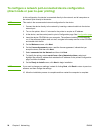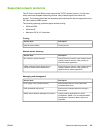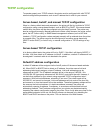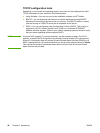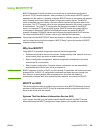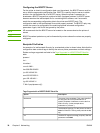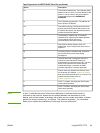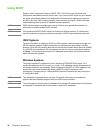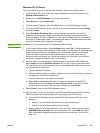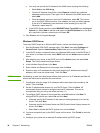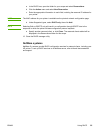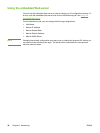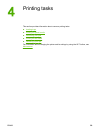
Using DHCP
Dynamic Host Configuration Protocol (DHCP, RFC 2131/2132) is one of several auto
configuration mechanisms that the printer uses. If you have a DHCP server on your network,
the printer automatically obtains its IP address from that server and registers its name with
any RFC 1001 and 1002-compliant dynamic name services as long as a WINS (Windows
Internet Naming Service) server IP address has been specified.
NOTE
DHCP services must be available on the server. Refer to your system documentation or
online help to install or enable DHCP services.
NOTE
If the printer and BOOTP/DHCP server are located on different subnets, IP configuration
may fail unless the routing device allows the transfer of DHCP requests between subnets.
UNIX Systems
For more information on setting up DHCP on UNIX systems, see the bootpd man page. On
HP-UX systems, a sample DHCP configuration file (dhcptab) may be located in the /etc
directory. Since HP-UX presently does not provide Dynamic Domain Name Services (DDNS)
for its DHCP implementations, HP recommends that you set all print server lease durations
to infinite. This ensures that print server IP addresses remain static until Dynamic Domain
Name Services are provided.
Windows Systems
The printer supports IP configuration from a Windows NT/2000/XP DHCP server. This
section describes how to set up a pool, or “scope,” of IP addresses that the Windows server
can assign or lease to any requester. When configured for BOOTP or DHCP operation and
powered on, the printer automatically sends a BOOTP or DHCP request for its IP
configuration. If properly set up, a Windows DHCP server will respond with the print server’s
IP configuration data.
NOTE
This information is provided as an overview. For specific information or for additional
support, see the information supplied with your DHCP server software.
NOTE
To avoid problems resulting from IP addresses that change, HP recommends that all printers
be assigned IP addresses with infinite leases or reserved IP addresses.
32 Chapter 3 Networking ENWW



